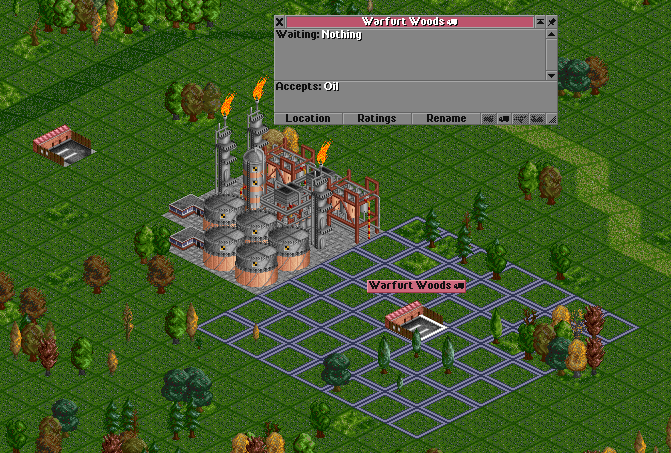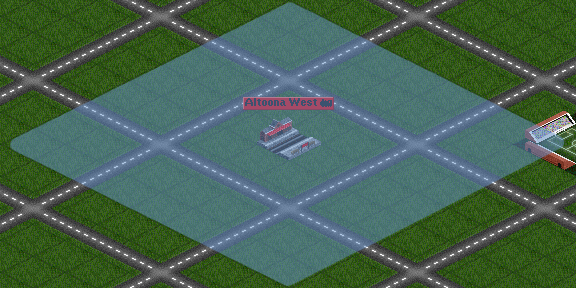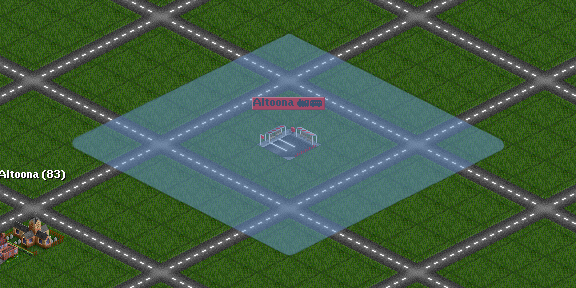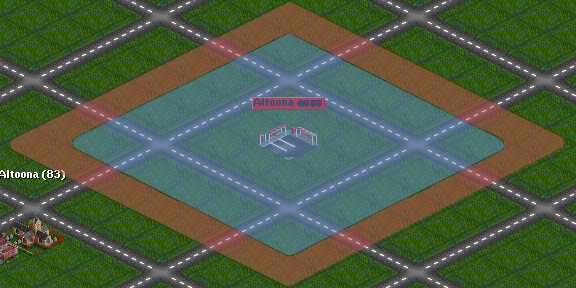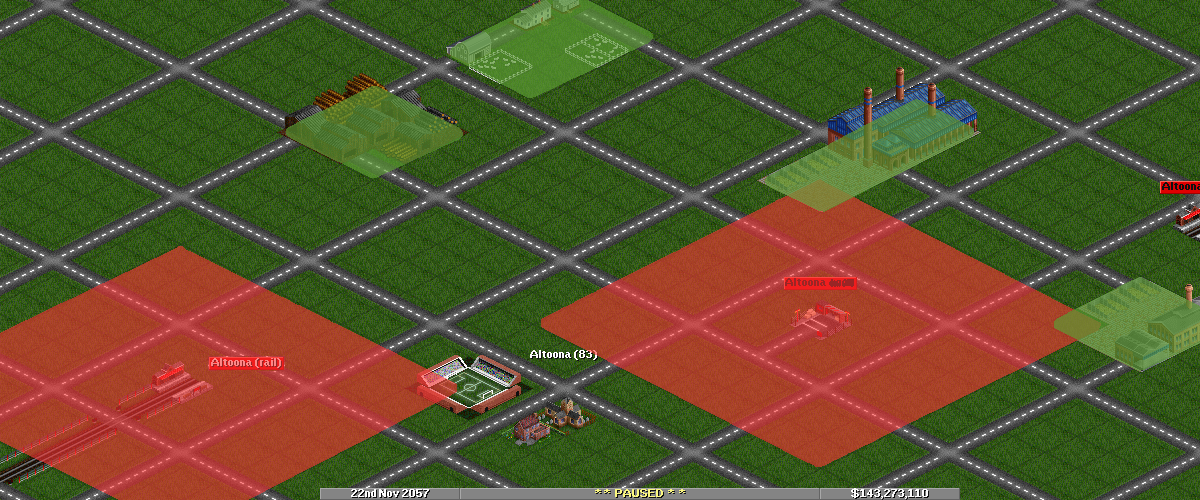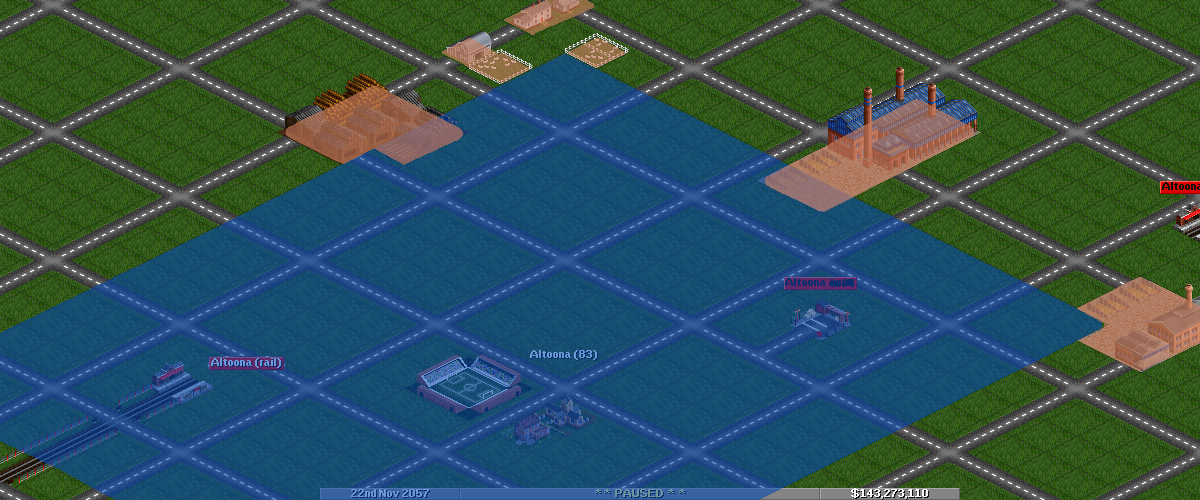This article or section is outdated. Some of its content may no longer be accurate due to changes in the latest release. Please update this article.
Recent OpenTTD versions have reworked the catchment area mechanics.
The Catchment Area of a Stations is the radius around the stage that it can service. Town-buildings and Industries that are within a station's catchment area accept Cargo through this station, and will place their cargo at the station to be delivered elsewhere.
Contents |
Setting: Allow more realistically sized catchment areas
If the Allow more realistically sized catchment areas option is on then the size of the catchment area depends on the type of the station. Otherwise it has a radius of 4 tiles for every station.
For a single physical station, Modified catchment is the same as catchment area. This attribute of a station is inherent. If the Allow more realistically sized catchment areas option is ON then the station radius of a single physical station depends on the type of the station.
- For a combined station, the radius of each of its component physical stations is promoted to the radius of the most extensive component.
So, the lone road station shown, Altoona, has a radius of 3. The lone rail station, Altoona West, has a radius of 4. But if we demolish Altoona West and rebuild it as a rail station combined with Altoona, then the road station's radius is promoted to 4 as well.
Production catchment area
In some industries only certain squares can accept the cargo required by that industry. You can use the Land area information tool to find out which square accept cargo. When building a station you can see, in the station building dialog, which types of cargo will be accepted by the industries in the catchment area. For non-physically attached combined stations the catchment area also covers all the space between the individual stations. Both stations in the picture wouldn't accept oil if they were built as separate stations because they are too far away from the refinery. But since they form a single combined station their catchment area extends over the refinery and makes them accept oil. This only applies for delivery, not for pickup of cargo. Thus the pictured stations won't get the goods produced by the refinery. (The described case and picture applies when the Allow more realistically sized catchment areas option is enabled.)
- For production, catchment area of a logical station is the union of the physical station radii.
- For production, an industry's bounding box counts toward overlap. Any single tile of overlap is sufficient.
Industries that don't overlap the production catchment area cannot ship goods out of the station. Therefore, no lumber nor sheep wait for pickup at Altoona; the Sawmill and Sheep Farm don't overlap the catchment.
The Brick Works overlaps Altoona's production catchment by a single tile, in its parking lot. Even so, Altoona can carry away the full brick production. The Glass Works is missing the tile that would otherwise overlap the catchment; but that's okay, since the Glass Works' bounding box does overlap. Therefore, both bricks and glass wait for pickup at Altoona.
Cargo Acceptance area of stations
Every industry square can provide the cargo produced by that industry. Having multiple catchment area squares overlapping an industry doesn't give any advantages. However, coverage for town-building has direct effect on Passengers and Mail received. So the strategy to boost the town growth and building non-physically attached stations to increase the catchment area will improve the patronage of large station which is difficult to be built near the center of the town.
For acceptance, catchment area of a logical station is the bounding box of its physical station radii. Equivalently, Acceptance catchment area is the station radius around the bounding box of its physical stations.
- For acceptance, an industry's footprint only counts toward the overlap. Any single tile of overlap is sufficient.
Altoona's acceptance catchment overlaps the Sawmill and Brick Works, so the station will accept wood and clay for these industries.
The Sheep Farm's bounding box overlaps the acceptance catchment but no footprint tile does overlap; the same is true for the Glass Works, due to that missing corner. Therefore, Altoona cannot accept farm supplies or lime, respectively.
Catchment Area and Station Rating
When a building is covered by multiple catchment areas, the station with the highest rating will get the largest part of the cargo. Note that when three or more catchment areas cover the same building, only the two catchment areas with the highest ratings will get cargo.
For details see the Game mechanics page.









